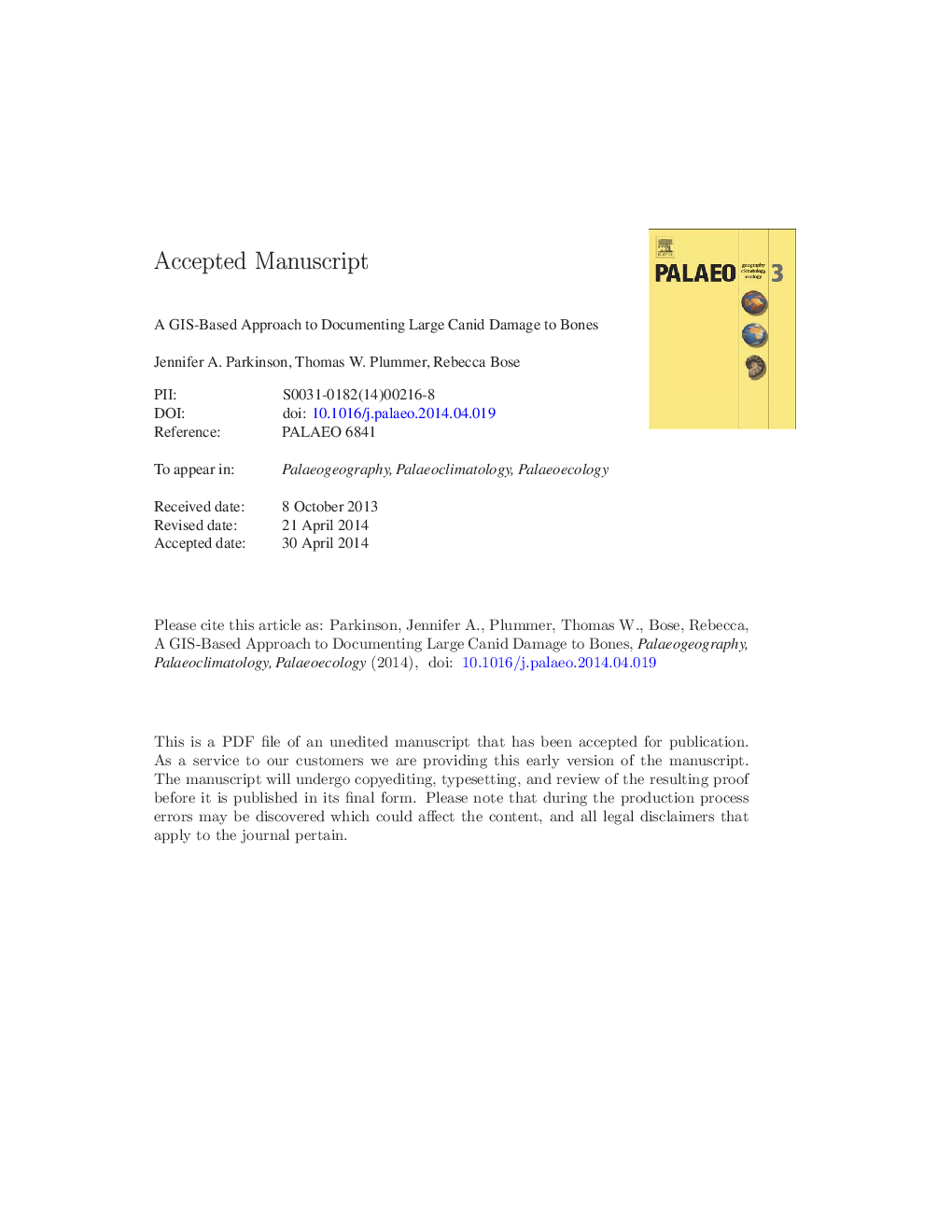| کد مقاله | کد نشریه | سال انتشار | مقاله انگلیسی | نسخه تمام متن |
|---|---|---|---|---|
| 6350082 | 1622181 | 2014 | 49 صفحه PDF | دانلود رایگان |
عنوان انگلیسی مقاله ISI
A GIS-based approach to documenting large canid damage to bones
ترجمه فارسی عنوان
یک روش مبتنی بر سیستم اطلاعات جغرافیایی برای مستند سازی آسیب های بزرگ کانادایی به استخوان
دانلود مقاله + سفارش ترجمه
دانلود مقاله ISI انگلیسی
رایگان برای ایرانیان
کلمات کلیدی
موضوعات مرتبط
مهندسی و علوم پایه
علوم زمین و سیارات
فرآیندهای سطح زمین
چکیده انگلیسی
Experimental studies of modern carnivore tooth marking patterns are integral to understanding the nature of carnivore involvement in archeological bone assemblages. However, modern bone damage data for most carnivore taxa are limited. This is particularly true for canids. This study presents bone damage data collected from feeding experiments conducted with Mexican Gray Wolves (Canis lupus baileyi) and Red Wolves (Canis rufus). This is the largest experimental assemblage reported for canids to date. The image-analysis GIS approach described by Marean et al. (2001) is expanded on here and used to document bone preservation and tooth mark distribution for the first time in a carnivore-modified bone assemblage. Further, we introduce the use of the ArcGIS Spatial Analyst to identify significant concentrations of bone modifications. Results show that the distribution of tooth pits varies considerably across elements as well as across different portions of the same element, and that significant clusters of tooth pits occur on all long bones. We suggest that with a large enough sample, the GIS Spatial Analyst can be a useful tool for analyzing the distribution of bone modifications with greater resolution than previous methods. This method facilitates comparisons between experimental and fossil assemblages which may aid in identifying the timing of access to carcasses by carnivores involved in modifying fossil assemblages. Finally, the use of this rigorous methodology is a step toward increasing standardization in methods of taphonomic analysis.
ناشر
Database: Elsevier - ScienceDirect (ساینس دایرکت)
Journal: Palaeogeography, Palaeoclimatology, Palaeoecology - Volume 409, 1 September 2014, Pages 57-71
Journal: Palaeogeography, Palaeoclimatology, Palaeoecology - Volume 409, 1 September 2014, Pages 57-71
نویسندگان
Jennifer A. Parkinson, Thomas W. Plummer, Rebecca Bose,
